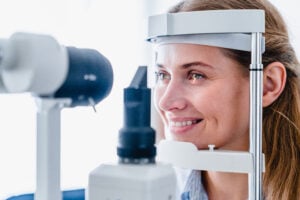Osteoarthritis is often blamed on ‘wear and tear’ and is a consequence of ageing.
But research has shown that there is much more to it than that. For a start, it is caused when smooth material called cartilage inside the joint breaks down. Cartilage cushions the joints. When it gets worn down, there can be pain and stiffness in the area. That’s because the bones grind against each other.
Other tissues in the joint can become inflamed too. The most common areas to be affected are the hands, knees and hips.
Statistics published last year by the Center for Disease, Control and Prevention shows that around 32.5 million American adults have Osteoarthritis. About one in 10 adults suffer from Osteoarthritis in the UK, and the knee is the joint most commonly affected.
Osteoarthritis is believed to be the most prevalent chronic joint disease globally, and it’s also one of the most common sources of pain and disability in the older generation. Around half of the world’s population, aged 65 and older, suffer from it. Around 80% of people with symptoms find that their movement is limited, while a quarter find that their ability to perform daily activities is severely impaired.
Factors that increase the risk for developing Osteoarthritis
Being overweight increases the risk of having Osteoarthritis at a later stage in your life. That’s because any additional weight you gain puts extra strain on your knees.
Women and those with a family history of the condition are more likely to develop Osteoarthritis. Sports such as running, cycling, rugby, hockey, weight-lifting, or rowing can damage the joints and lead to problems in later life.
Diagnosis of Osteoarthritis
A doctor will advise if you have signs of arthritis by undertaking a medical examination of your hands, knees or other joints. They will also ask about your medical history, including whether or not the condition runs in the family.
A number of imaging tests can be performed to confirm the condition. These could be X-rays, magnetic resonance imaging (MRI) scans or computerised tomography (CT) scans.
With an X-ray, the doctor will look at the cartilage, surface of the bone and space in the joint. Bone spurs (osteophytes) may be visible. An MRI or CT scan can be used to examine the joint in more detail.
A blood test can differentiate between Osteoarthritis due to wear and tear or rheumatoid arthritis, an autoimmune condition.
Signs of Osteoarthritis in the hands
- Pain and stiffness in the hands
- Inability to bend the fingers like you used to
- Bumps and lumps on the finger joints
- Swelling and redness at the joints
- Weakness in the hands so that opening a door or carrying a message bag becomes more difficult
Signs of Osteoarthritis in the hips
- Pain in the groin or thigh that spreads to other areas such as the outer thigh, knee or buttocks is one of the classic signs of arthritis
- Limping or pain that makes it difficult to walk any distance
- Pain after sitting for a while, or on first waking
- Problems getting out of a car.
- Pain when leaning over
Signs of Osteoarthritis in the knees
- The knees may become swollen and inflamed. Redness is one of the classic signs of arthritis in the knee area
- Your knees become sore when you walk or climb stairs
- It is difficult to straighten your knee when you first wake up
- The knee joint makes creaking or grinding noises when you stand up or sit down
- The pain increases during wet weather
Treatment for Osteoarthritis
Unfortunately for those in a lot of pain, there is no direct cure for Osteoarthritis. However, there are plenty of ways to help individuals live with the condition.
These include losing weight if necessary, resting when the pain is bad, and taking anti-inflammatory drugs, as prescribed by a physician.
A drug known as Diacerein can slow cartilage breakdown while Risedronate (Actonel) reduces the degeneration of the cartilage.
Corticosteroid injections can help with pain, inflammation and swelling and hyaluronic acid injection acts as a lubricant for the joints.
Transcutaneous electrical nerve stimulation (TENS) machines often help with pain and can be applied at home. Specific exercises can strengthen the muscles and joints around the affected area. Rubbing in medicated skin creams and gels can help particularly with hand and knee Osteoarthritis. Placing a warm cloth over the joints can loosen them, and an ice pack can reduce swelling and pain.
Patients with severe arthritis in the hip joints may benefit from a complete or partial hip replacement. There are minimally invasive surgery techniques that can offer minor muscle damage and quicker recovery. For Osteoarthritis in the hands, one surgical option is joint fusion, where the bones are joined together, lessening pain but restricting movement.
Finding the best Rheumatologist for arthritis
If you have suspected signs of arthritis, your GP will refer you to a specialist Rheumatologist who is highly trained in treating patients with Rheumatoid arthritis and Osteoarthritis.
Rheumatologists and Orthopedist are both specialties that treat joint pain, but the main difference is that Rheumatology is a branch of internal medicine, while Orthopedists are surgeons.
Starting your evaluation with a Rheumatologist makes the most sense, as they will diagnose your condition and recommend the best treatment plan, whether it includes medication therapies, physical therapy or surgery.
Medical Travel Market will soon be launching agency services to connect you with world-leading international healthcare providers. Sign up to stay informed.
Discover Health Tourism Worldwide















